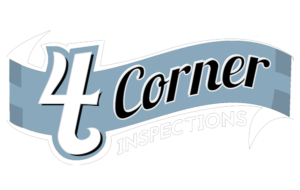1. Winterize Your Home’s HVAC

When the time comes for colder weather, it is important to properly turn off your A/C unit and protect it from the elements.
Remove leaves and other debris that may have collected during the spring and summer – spraying it off with a garden hose is a quick way to do this. Wait for it to completely dry and then complete these steps:
- Open the electrical circuit lid & flip power switch to prevent A/C from self-starting.
- Insulate exposed pipes to keep them from freezing.
- Cover the HVAC unit with a cover or a tarp to protect it from snow & dirt.
During the winter – make sure to brush snow off to protect the unit from too much weight.
2. Turn on the Furnace

It is important to fire up your furnace earlier than the first cold day, to let it slowly begin to heat up your home. You will also want to turn it on earlier to make sure that it is still working properly.
Remember to keep your furnace on throughout the winter, even when you leave for vacation. Not only will this keep your pipes from freezing and bursting, but it will save you money.
Turning off the furnace completely will require a lot more energy to get it back up and running when you get home, and will take awhile until your home feels warm again.
3. Check Your Fireplace & Chimney

The fireplace is a great way to have some extra heat in your home during the winter, and is also a fun way to make your home warm and cozy during a bleak winter day.
Checking your chimney for debris and cracks.
- Debris such as leaves and bird nests can build up during the summer and fall and can be a fire and safety hazard.
- You wouldn’t want a bird nest to still be occupied when you have a fire, so making sure the chimney is clear before the cold season is a good idea.
- Cracks in the chimney can create bigger problems – leaning, collapsing altogether, and toxic fumes may not exit your home properly.
It is also a good idea to open and close the flue to make sure that it is opening and closing completely. This way you can make sure that snow will not come all the way down inside and that smoke will be able to get out instead of coming into your home.
4. Replace Screens with Storm Windows

During the summer, windows and doors that have screens are a great way to cool your home down. However, when winter is getting close, change out these screens for the glass storm windows.
Glass storm windows will hold up much better against the elements than screens will; screens may get holes or come off the frame.
Storm windows are also a much better source of insulation and will keep your home much warmer.
5. Winterize Pipes

Winterizing your pipes is one of the most important things on your winter checklist. If they are not properly winterized they can freeze and burst, which you might not even find out about until spring when the frozen pipes begin to thaw.
A few tips to prevent frozen pipes:
- Shut off the outdoor water supply – hoses & faucets – and then drain them
- Insulate pipes that aren’t in a heated area (indoors) – insulation tubes made of polyethylene or fiberglass work best
- Open cabinets along exterior walls so that heat can get in
6. Reverse Fans

This might seem strange, but if you have a ceiling fan for the summer you can use it in the winter to keep your home warm.
Since heat rises, you can change your fan from counter-clockwise to clockwise. Doing this makes warm air circulate down, and gently recycles the warm air. Just make sure to turn it on low, if it is on too high it won’t work!
7. Prepare Your Lawn for the Winter

The fall season is actually the perfect time to work on your lawn, because it will protect it during the winter months.
In late September, aerate and overseed your lawn. When the heat of the summer wears off is actually the perfect time for your lawn to grow. Grass begins to grow its roots deeper to prepare for dormancy.
Around October and November use a fertilizer with winterizer on your lawn. This fertilizer will seep in when it snows, so when springtime comes around your grass will have enough nutrients to come back in full force!
8. Check Your Snowblower

After sitting since last winter, you should check your snowblower at the end of fall to make sure it is still working.
You should’ve drained out the leftover gas last season by letting it run, so make sure to buy a gas can so you’re ready to go when the first snowstorm comes. Check the tires and pump them up if they are getting flatter, because the cold air will make them even flatter.
9. Buy De-Icer

Make sure to stock up on de-icing supplies – whether you want salt, sand, kitty litter or regular de-icer – having this in your supplies will come in handy.
When it snows over-night and freezes your whole driveway or walkway, you’ll want to be able to throw sand down so you can walk without falling.
10. Check Your Water Heater

Checking your water heater to make sure it is working properly is something that you’ll want to do, that way you won’t be taking an ice cold shower on a snowy day!
However, something that is often forgotten is draining the sediment from the bottom of your hot water heater. Sediment builds up gradually and can break your water heater by clogging it. We recommend draining the sediment at least once a year. This will make your water heater last a lot longer!













